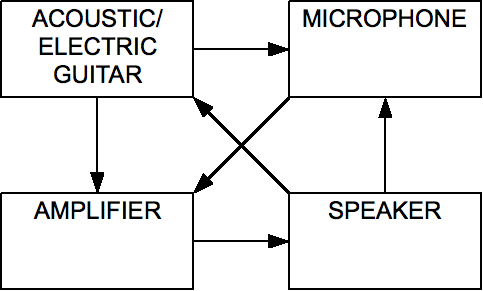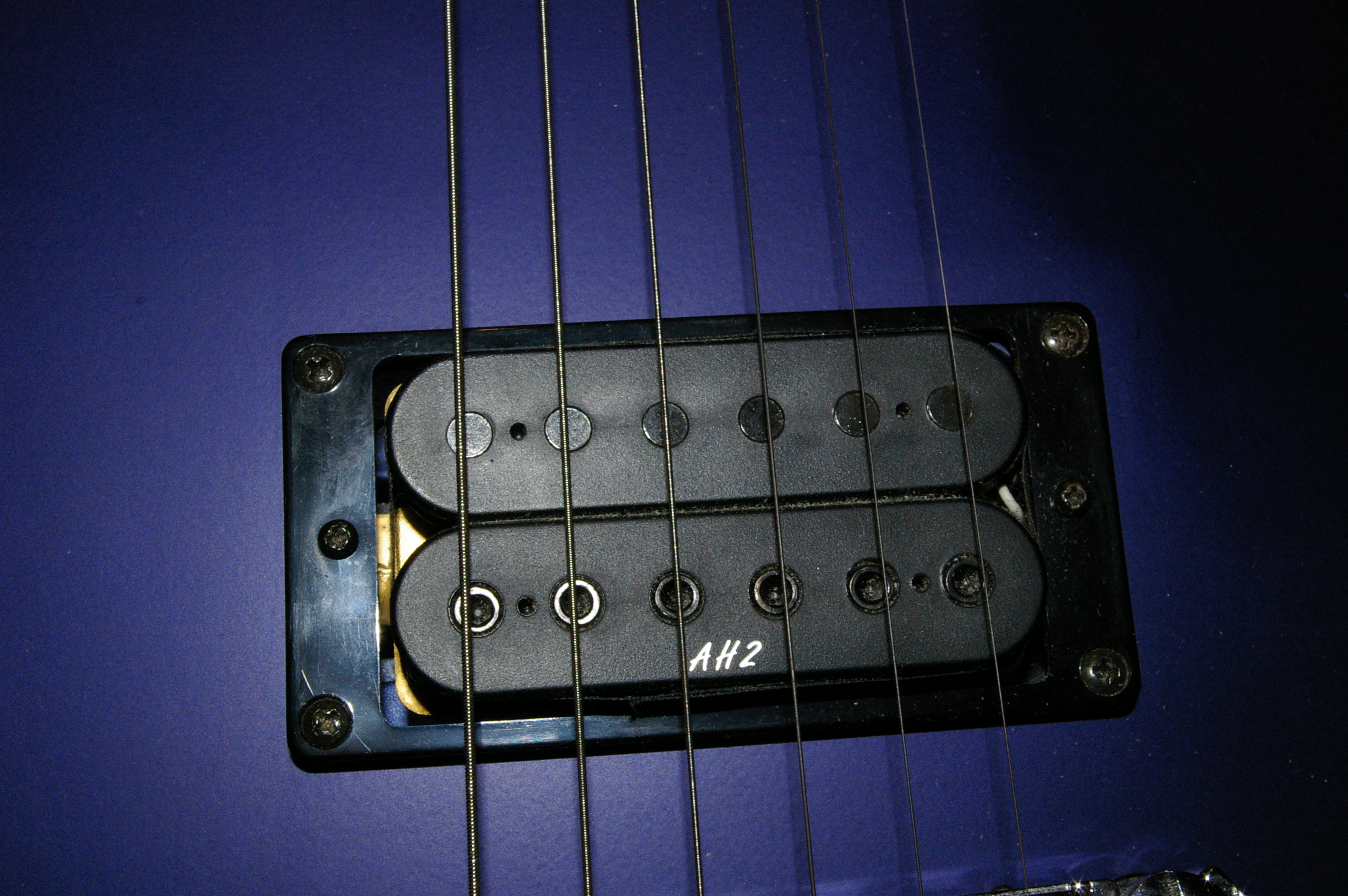|
Gibson ES-330
The Gibson ES-330 is a thinline hollow-body electric guitar model produced by the Gibson Guitar Corporation. It was first introduced in 1959 and the guitar had the same dimensions as the ES-335. History Sales of Gibson’s Electric Spanish (ES) series guitars (ES-100 through ES-350) in the 1930s and 40s encouraged the company to continue to produce more electric guitars. In 1955 Gibson released the ES-225T and the Gibson ES-350T thinline models. In 1958 Gibson released a new model, the ES-335, featuring a double-cutaway body. The ES-330 was released in 1959, In for a retail price of $275. The 330s came as a one P-90 guitar pickup model called the ES-330T, and a two pickup called the ES-330TD. Specifications The ES-335 was released in 1958 with the same dimensions as the ES-330. The 330s had a maple top, back and sides, with two F Holes in the top. The body was long, wide and deep. Initially the neck met the body at the 16th fret, rather than the 19th-fret on the ES-335. In ... [...More Info...] [...Related Items...] OR: [Wikipedia] [Google] [Baidu] |
Gibson Guitar Corporation
Gibson, Inc. (formerly Gibson Guitar Corporation and Gibson Brands Inc.) is an American manufacturer of Guitar manufacturing, guitars, other musical instruments, and professional audio equipment from Kalamazoo, Michigan, and now based in Nashville, Tennessee. Orville Gibson started making instruments in 1894 and founded the company in 1902 as the Gibson Mandolin-Guitar Mfg. Co. Ltd. in Kalamazoo, Michigan, to make mandolin-family instruments. Gibson invented archtop guitars by constructing the same type of carved, arched tops used on violins. By the 1930s, the company was also making flattop acoustic guitars, as well as one of the first commercially available semi-acoustic guitar, hollow-body electric guitars, used and popularized by Charlie Christian. In 1944, Gibson was bought by Chicago Musical Instruments (CMI), which was acquired in 1969 by Panama-based conglomerate Ecuadorian Company Limited (ECL), that changed its name in the same year to Norlin Corporation. Gibson was ow ... [...More Info...] [...Related Items...] OR: [Wikipedia] [Google] [Baidu] |
P-90
The P-90 (sometimes written P90) is a single coil electric guitar pickup produced by Gibson Guitar Corporation since 1946, as well as other vendors. Compared to other single coil designs, such as the Fender single coil, the bobbin for a P-90 is wider but shorter. The Fender style single coil is wound in a taller bobbin, but the wires are closer to the individual poles. This makes the P-90 produce a somewhat warmer tone with less edge and brightness, As with other single-coil pickups, the P-90 is subject to AC hum unless some form of cancellation is used. History Around 1940, Gibson offered a new bridge pickup cased in metal for the ES-100/125 series as an alternative to the classic Charlie Christian pickup. Officially, P-90 pickups were introduced in 1946, when Gibson resumed guitar production after World War II. The name refers to the part number as designated by the company. They were initially used to replace Gibson's original "bar" or "blade" pickup, also known as th ... [...More Info...] [...Related Items...] OR: [Wikipedia] [Google] [Baidu] |
Electric Guitar
An electric guitar is a guitar that requires external electric Guitar amplifier, sound amplification in order to be heard at typical performance volumes, unlike a standard acoustic guitar. It uses one or more pickup (music technology), pickups to convert the vibration of its strings into Electrical signal, electrical signals, which ultimately are reproduced as sound by loudspeakers. The sound is sometimes shaped or electronically altered to achieve different timbres or tonal qualities via amplifier settings or knobs on the guitar. Often, this is done through the use of Effects unit, effects such as reverb, Distortion (music), distortion and "overdrive"; the latter is considered to be a key element of electric blues guitar music and jazz, rock music, rock and Heavy metal music, heavy metal guitar playing. Designs also exist combining attributes of electric and acoustic guitars: the Semi-acoustic guitar, semi-acoustic and Acoustic-electric guitar, acoustic-electric guitars. Inven ... [...More Info...] [...Related Items...] OR: [Wikipedia] [Google] [Baidu] |
ES-335
The Gibson ES-335 is a semi-hollow body semi-acoustic guitar introduced by the Gibson Guitar Corporation as part of its ES (Electric Spanish) series in 1958. It has a solid maple wood block running through the center of its body with hollow upper bouts and two violin-style f-holes cut into the top over the hollow chambers. Gibson has released numerous variations and models based on the ES-335. The ES-335 is manufactured at the Gibson Nashville facility, as of 2024. It was also produced at Gibson Memphis from 2000 until the facility closed in 2019. History Until 1952, Gibson produced only hollow-body guitars, which are prone to feedback when amplified loudly. That year saw the introduction of their first solid-body, the Gibson Les Paul, a significantly different instrument from Les Paul's early electric guitar experiment, "The Log", which consisted of a center block with detachable chambers on both sides, a neck, hardware, and a pickup attached. By 1958, Gibson was making a few ... [...More Info...] [...Related Items...] OR: [Wikipedia] [Google] [Baidu] |
ES-225
The Gibson ES-225 is a thinline hollowbody electric guitar model produced by the Gibson Guitar Corporation between 1955 and 1959. It is notable as the first thinline hollowbody guitar produced by Gibson. History The ES-225 was originally introduced in 1955 as the ES-225T, a thinline hollowbody guitar featuring a Florentine cutaway, the Les Paul combined bridge and tailpiece (also used on the Les Paul from 1952 to 1953 and on the ES-295), a laminated pickguard, and a single P-90 pickup mounted in an unusual position midway between the bridge and the end of the fingerboard. From 1956 the ES-225TD, a twin pickup model with conventional pickup positioning, was also available.Both models had a tobacco sunburst finish, with more expensive natural finish models (ES225TN and ES-225TDN) also available from 1956.Duchossoir A R (1998). ''Gibson Electrics: The Classic Years''. Milwaukee: Hal Leonard Corporation, p. 229 [...More Info...] [...Related Items...] OR: [Wikipedia] [Google] [Baidu] |
Gibson ES-350T
The Gibson ES-350T is an electric guitar model from Gibson Guitar Corporation, released in 1955. The ES-350T is a further development of the Gibson ES-350 model from 1947 and as such has a completely hollow body. The unique feature of the Gibson ES-350T at the time of its market introduction was the reduced width of the rims. As a result, the guitar has a thinner body compared to instruments with a resonance body that is of full thickness. The ES-350T, together with its sister models Gibson ES-225 TDN and Gibson Byrdland, was one of the first models of the thinline guitar type. Design The letter T in the model name of the ES 350T stands for thinline and was given by Gibson at the same time as the three new models of hollow-bodies with narrow sides and flat bodies were introduced. The body of the ES-350T – the arched top and bottom as well as the frames – is made entirely of laminated maple. The neck of the guitar, glued into the body, is made of maple and has a rosewood fi ... [...More Info...] [...Related Items...] OR: [Wikipedia] [Google] [Baidu] |
F Hole
A sound hole is an opening in the body of a stringed musical instrument, usually the upper sound board. Sound holes have different shapes: * Round in flat-top guitars and traditional bowl-back mandolins; * F-holes in instruments from the violin family, archtop mandolins and in archtop guitars; * C-holes in viola da gambas and occasionally double-basses and guitars * Rosettes in lutes and sometimes harpsichords; * D-holes in bowed lyras. Some instruments come in more than one style (mandolins may have F-holes, round or oval holes). A round or oval hole or a rosette is usually a single one, under the strings. C-holes, D-holes and F-holes are usually made in pairs placed symmetrically on both sides of the strings. Most hollowbody and semi-hollow electric guitars also have F-holes. Though sound holes help acoustic instruments project sound more efficiently, sound does not emanate solely from the sound hole. Sound emanates from the surface area of the sounding boards, with sound ... [...More Info...] [...Related Items...] OR: [Wikipedia] [Google] [Baidu] |
Audio Feedback
Audio feedback (also known as acoustic feedback, simply as feedback) is a positive feedback situation that may occur when an acoustic path exists between an audio output (for example, a loudspeaker) and its audio input (for example, a microphone or guitar pickup). In this example, a signal received by the microphone is amplified and passed out of the loudspeaker. The sound from the loudspeaker can then be received by the microphone again, amplified further, and then passed out through the loudspeaker again. The frequency of the resulting howl is determined by resonance frequencies in the microphone, amplifier, and loudspeaker, the acoustics of the room, the directional pick-up and emission patterns of the microphone and loudspeaker, and the distance between them. The principles of audio feedback were first discovered by Danish scientist Søren Absalon Larsen, hence it is also known as the Larsen effect. Feedback is almost always considered undesirable when it occurs with a si ... [...More Info...] [...Related Items...] OR: [Wikipedia] [Google] [Baidu] |
Humbucker
A humbucker, humbucking pickup, or double coil, is a guitar pickup that uses two wire coils to cancel out noisy interference from Single coil guitar pickup, coil pickups. Humbucking coils are also used in Microphone, dynamic microphones to cancel electromagnetic hum. Humbuckers are one of two main types of guitar pickups. The other is called a single coil. History The "humbucking coil" was invented in 1934 by Electro-Voice, an American professional audio company based in South Bend, Indiana, that Al Kahn and Lou Burroughs incorporated in 1930 for the purpose of manufacturing portable public address equipment, including microphones and loudspeakers. A twin coiled guitar pickup invented by Arnold Lesti in 1935 is arranged as a humbucker, and the patent USRE20070 describes the noise cancellation and current summation principles of such a design. This "Electric Translating Device" employed the solenoid windings of the pickup to magnetize the steel strings by means of switching o ... [...More Info...] [...Related Items...] OR: [Wikipedia] [Google] [Baidu] |
Brazilian Rosewood
''Dalbergia nigra'', commonly known as the Bahia rosewood, jacarandá-da-Bahia, Brazilian rosewood, Rio rosewood, jacarandá-do-brasil, pianowood, caviúna, graúna, jacarandá-una or obuina is a species of legume in the family Fabaceae. Description ''Dalbergia nigra'' produces a very hard and heavy wood, characteristically varied in colour from brick red through various shades of brown (medium to nearly black). Pieces that feature veins of black colouration called ''spider webbing'' or ''landscape grain'' are especially prized. Another distinguishing feature is its outstanding resonance. An evenly cut piece that is tapped emits a bright metallic ring that sustains. This property, combined with its beauty, has made Brazilian rosewood a favourite of musical instrument makers for centuries. Brazilian rosewood is highly resistant to insect attacks. There are many species in the genus '' Dalbergia'' that can be confused with ''Dalbergia nigra'', but the latter can be recognised by ... [...More Info...] [...Related Items...] OR: [Wikipedia] [Google] [Baidu] |
Epiphone Casino
The Epiphone Casino is a thinline semi-acoustic guitar, hollow body electric guitar manufactured by Epiphone, a branch of Gibson Guitar Corporation, Gibson. The guitar debuted in 1961 and has been associated with such guitarists as Howlin' Wolf, Phil Upchurch, George Harrison, John Lennon, Paul McCartney, Noel Gallagher, Keith Richards, Dave Davies, Brad Whitford, Shirley Manson, Paul Weller, The Edge, Josh Homme, Daniel Kessler (guitarist), Daniel Kessler, Brendon Urie, Gary Clark, Jr., Glenn Frey, John Illsley, and Peter Green (musician), Peter Green. Construction Casinos have been manufactured in the United States, Japan, Korea and China. The Casino, also designated by Epiphone as model E230TD, is a thinline hollow-bodied guitar with two Gibson P-90 pick-ups. Although generally fitted with a trapeze-type tailpiece, often a Bigsby vibrato tailpiece is used in its place (either as a factory direct feature or as an aftermarket upgrade). Unlike Semi-acoustic guitar, semi-hollow b ... [...More Info...] [...Related Items...] OR: [Wikipedia] [Google] [Baidu] |
Gibson Electric Guitars
Gibson, Gibson's or Gibsons may refer to: Business * Gibson Appliance, a former American refrigerator manufacturer * Gibson (guitar company), an American manufacturer of guitars, other musical instruments, and audio equipment * Gibson Greetings, an American greeting cards brand * Gibson Manufacturing Corporation, a former American tractor and railroad speeder manufacturer * Gibson Technology, and English automotive and motorsport company based * Gibson's Discount Center, a former American discount store chain * Gibson's Finest, a brand of Canadian whiskey People * Gibson (surname) * Gibson baronets Places Australia * Gibson, Western Australia, a village * Gibson Desert, Western Australia Canada * Gibson, Ontario * Gibsons, a town in British Columbia United States * Gibson, Arkansas * Gibson, Georgia * Gibson, Iowa * Gibson, Louisiana * Gibson, Mississippi * Gibson, Dunklin County, Missouri * Gibson, Pemiscot County, Missouri * Gibson, New York * Gibson, North Carolina * ... [...More Info...] [...Related Items...] OR: [Wikipedia] [Google] [Baidu] |





